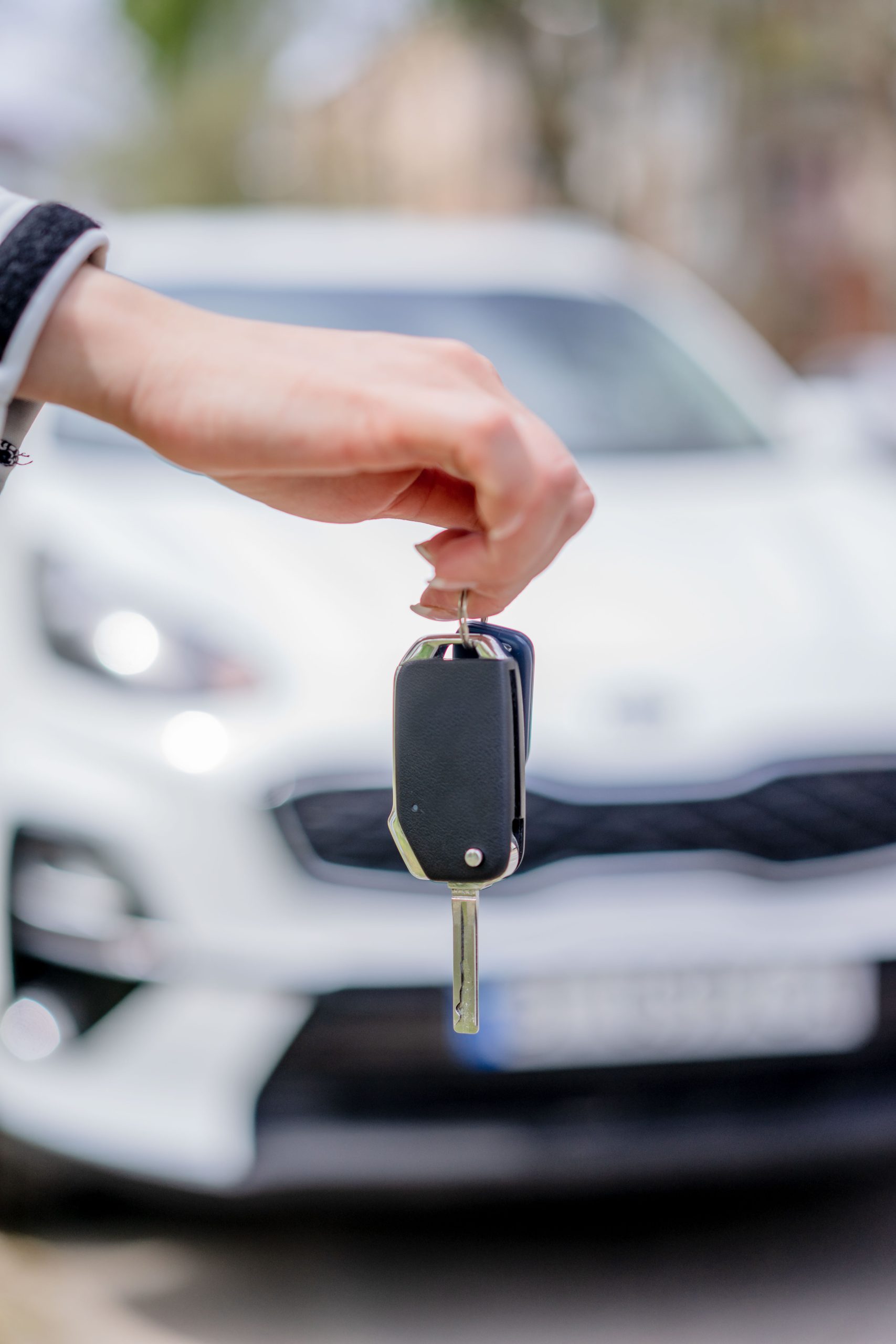Lifestyle
The 4 step process o organize your ideas effectively

Packed with Ideas? That’s good news.
Your suggestions are stored all over theoretical checklists, computer system data, notepads, and so on.
This post will aid you to organize your concepts successfully.
Organizing your ideas is essential to make the most of them, accumulating the material as well as having the ability to utilize them in a functional way.
Your suggestions need to be arranged for two major factors:
So you can mobilize them at the correct time for your tasks.
To make them valuable and also effective in the conduct of your projects and also assist you to make the right choices.
Without a framework as well as comprehensibility, concepts really decline. It is a little bit like a book in a collection: if it is not kept in its location, it is shed. It does exist somewhere, however it is difficult to enjoy its content because it is not where it must be.
With concepts, it’s a little bit the same. You need to be able to keep in mind that they exist, certainly, but likewise to utilize those concepts when you require them the most as well as identify one of the most helpful ones.
In this write-up, I offer you today an approach to organize your ideas effectively. You will certainly find out some pointers from my personal organizing system to ultimately obtain the most out of your suggestions.
This organizational approach contains 4 actions.
Step 1: To arrange your concepts, start by grouping your concepts together
If your suggestions are all over the place, the initial step is to put them all in one paper.
This collection happens either as a mind map (I invite you to click the previous link if you have not read the post I lately created. It explains precisely how this sort of device jobs).
You can also utilize a large blank sheet or a large white board.
Aesthetically, you will certainly have all your concepts before you. Then you can deal with the second step, which is structuring.
Step 2: Classify concepts to make them coherent
As an initial step, you will assemble ideas on the very same theme. You might recognize that some ideas repeat themselves (you will certainly after collecting them under the exact same name) or negate each other (it is up to you to see which one you will certainly remember).
Bit by bit, you will certainly identify 4 or 5 significant motifs. Mark in large character these headings to make them stand out plainly. You can also use various colors.
The 2nd part of the evaluation is to recognize exactly how these different themes relate to each other:
Are they independent of each other?
One is the requirement of another
Do they negate each other?
Right here you will certainly focus your evaluation on feasible links and also organizations.
Currently, allow’s most likely to step 3 …
Step 3: Prioritize suggestions
This 3rd step is based on prioritizing your suggestions
In each motif you have created, recognize the most vital suggestions, those that are additional, and also those that are even more unimportant. This step is important for implementing your ideas.
In this manner, you will certainly recognize what to begin with and you will not dwell on additional or ancillary ideas. As a matter of fact, thanks to this structuring of concepts, you will certainly be able to focus totally on the fundamentals.
We sum up: arranging these ideas includes organizing your ideas, structuring your suggestions within motifs, and then prioritizing your styles within them.
Ensure you recognize the previous actions before continuing to the last action.
Step 4: Synthesize ideas.
The last step in the procedure of organizing his ideas is synthesis.
With the synthesis of your concepts, you benefit from an international vision of all your suggestions and you do not obtain lost in the details.
Take the main sections you have actually created, the web links you have actually identified, and also the prioritizations you have actually made, and emerge the whole in the form of a representation. Once more, the mind-mapping device is very powerful. Thanks to it, you will just bear in mind a few words or a photo for every idea.
And all of an unexpected, you have before you all your suggestions.
You recognize precisely how they function and also you can include them in your projects at any time.
Read More: 6 Business ideas for young Entrepreneurs
Lifestyle
Build Your Dog’s Confidence with Car Travel: Tips and Tricks
If you’re a dog owner, you know that car travel can be a bit of a challenge for some pups. Some dogs find being in a moving car stressful and can show this in a number of ways, including barking, whining, heavy panting, vomiting, or even refusing to get into the car in the first place. The good news is that you can help your furry friend overcome this fear and build their confidence in car travel. In this blog, we’ll provide you with some tips and tricks to help your dog feel more comfortable and secure during car rides. From creating a familiar and comfortable environment to gradually introducing the inside of the car, we’ll take you through each step to help your dog associate car travel with positive experiences. With a bit of patience and consistency, you can turn car travel into an enjoyable experience for both you and your furry friend.

In this blog, you will learn how to help your dog feel more confident during car travel. Many dogs experience stress and exhibit behaviors such as barking, whining, panting, vomiting, or refusing to get into the car. To address this, it’s important to create a positive association with the car and ensure your dog is secured to prevent any potential risks.
The first step is to create a comfortable and familiar environment by placing your dog’s bed and blankets inside the car. This will help your dog feel more secure and reduce the likelihood of losing balance while the car is moving. If your dog is crate trained, a secured crate can also provide a safe space in the car.
Next, get your dog used to the car by walking them around the vehicle with the engine off and doors shut. Reward them with treats, toys, or praise whenever they calmly approach the car, sniff it, or investigate it. Continue these short sessions until your dog is comfortable walking near the car.
Once your dog is relaxed around the outside of the car, you can introduce them to the inside. Start by placing some of their blankets inside and reward them for moving towards the open door. Gradually move the treat further into the car until your dog feels comfortable climbing inside. You can also sit in the car with your dog and offer a long-lasting treat to help build a positive association.
The next step is to close the door while your dog is inside the car. Start by closing it for a few seconds and gradually increase the time. If your dog becomes worried, repeat the step with the door partly closed and gradually work up to a fully closed door.
Once your dog is comfortable with the door closed, introduce the sound of the engine. Keep the car stationary, engine running, with your dog inside and offer a treat to help them relax. Gradually increase the length of time the engine runs and only continue if your dog remains calm.
When your dog is familiar with the sound of the engine, start with short drives and gradually increase the distance. Make sure the first few trips are to fun places to build a positive association. By following these steps, you can help your dog feel more confident and comfortable during car travel. To learn more about teaching your dog new skills, visit our website.
Lifestyle
10 Expert Tips for Renting a Car in the US: The Ultimate Guide
Renting a car can be a convenient and affordable option when traveling in the United States. However, with so many options to choose from and factors to consider, the process of renting a car can quickly become overwhelming. That’s why we’ve compiled our top 10 expert tips to help make the process easier and ensure that you have a stress-free rental experience. From signing up for a car rental rewards program to avoiding expensive insurance options, inspecting your car, and refueling, our tips will help you navigate the car rental process like a pro. Whether you’re a seasoned traveler or renting a car for the first time, read on to learn our expert advice on renting a car in the US.

Let me present to you our expert tips and advice on renting a car during your trip. Although car rental may seem like an easy process, choosing the right options can be overwhelming. GPS, insurance, and refueling are just a few of the many considerations to take into account when renting a car. Therefore, we have compiled the top 10 tips that you need to know when renting a car in the US.
Before we dive in, we’d like to introduce ourselves to those of you who are new to our channel. Trip Astute is a travel channel that focuses on sharing tips and tricks to make traveling easier, more affordable, and enjoyable. Our goal is to help you maximize your travel experience by providing expert travel advice, points and miles strategies, and innovative gear. If you find our content interesting, please consider subscribing to our channel.
Now, let’s get started with our top tips. Some of these may be obvious to savvy and experienced travelers, but we hope that there are a few tips in here that are still helpful to you.
Tip number one is to sign up for a car rental rewards program. Some credit cards or your workplace may offer access to a car rental rewards program. If this is the case, make sure to enroll in the loyalty program. One of the biggest perks is that some of these programs allow you to skip the check-in counter and go straight to your car. By using your reservation app or checking the lot board for your name, you can get on the road faster. If you have a premium travel credit card like the Chase Sapphire Reserve, you may have access to higher status levels with rental car companies. Check out our video on maximizing these benefits on the Chase Sapphire Reserve for more information.
Tip number two is to inspect your car. Although you may be eager to hit the road, we recommend doing a quick visual inspection of your car’s exterior. Check for any damage, especially big scratches or dents, and make sure they are recorded before you leave the rental car lot. You don’t want to be held liable for any damages to the car that were there before you rented it, especially if you don’t have primary insurance coverage through a credit card.
Which brings us to tip number three – know your insurance options. Many premium travel credit cards offer primary insurance coverage for rental cars. This allows you to decline the expensive and limited insurance coverage offered by the rental car company. We have created a video that explains how this works and covers different scenarios for coverage. It’s a bit complicated, but it’s worth understanding before your next car rental.
Tip number four – don’t use points to book your car rental. Although this tip is a bit controversial, we’ve heard that car insurance coverage from a credit card only applies if you pay for the rental car in full with your credit card. Therefore, we generally pay for car rentals out of pocket instead of using points. However, if you have any experience or first-hand knowledge with this situation, please let us know in the comments section.
Tip number five is to avoid underage rental fees. Rental car companies often charge extra if you’re under 25 and want to rent a car. While this charge is hard to avoid if you’re under 25, there are some potential ways to get around it. If you’re a AAA member, you can get the fee waived with Hertz. And if you’re a USAA member, you can do the same with Enterprise.
Tip number six is to avoid refueling options. Rental car companies often offer refueling options that seem convenient but are generally a bad deal. One option is to refill your car to the necessary level, but at three or four times the normal cost of fuel. Another option is to pay for a full tank refill, but the per-gallon rate is generally a lot higher than the local gas stations. We recommend avoiding these options and simply refilling the tank yourself before returning the car.
Tip number seven is to consider your pickup and drop-off locations. Rental car companies may charge additional fees if you pick up or drop off the car at a different location than where you rented it. Therefore, it’s important to consider your travel itinerary and choose the most convenient pickup and drop-off locations to avoid these fees.
Tip number eight is to be aware of toll roads and fees. Some rental car companies may offer electronic toll payment options, but they often come with high fees. If you plan on using toll roads during your trip, it’s best to bring your own toll transponder or pay for tolls out of pocket to avoid these additional fees.
Tip number nine is to use GPS or navigation apps. Most rental cars come with GPS or navigation systems, but they may also come with additional fees. To save money, you can use your own smartphone and a navigation app like Google Maps or Waze. Just make sure to bring a phone mount to secure your phone in the car.
Finally, tip number ten is to return the car on time. Rental car companies may charge extra fees if you return the car later than the agreed-upon time. To avoid these fees, make sure to plan your trip accordingly and allow enough time to return the car before the deadline.
Overall, renting a car during your trip can be a convenient and cost-effective way to explore your destination. However, it’s important to be aware of the potential pitfalls and fees associated with car rental. By following these tips and doing your research beforehand, you can save money and have a stress-free rental car experience.
Read More: Best 8 Smart Ways to Save Money on Travel
Lifestyle
Best 8 Smart Ways to Save Money on Travel

Smart Ways to Save Money on Travel
Traveling can be costly, but with some careful planning and wise choices, you can stretch your budget and save money on your trips. Here are some of the best strategies for saving money while traveling:
1. Hunt for deals and discounts: Take advantage of websites and online resources that offer deals on flights, hotels, and activities. Subscribe to newsletters and follow your preferred travel companies on social media to stay updated on promotions and discounts. Utilize tools like Google Flights to compare prices and find the best deals.
2. Travel during the off-season: Prices for flights, hotels, and activities tend to be higher during peak tourist seasons. Consider traveling during the off-season to save money and avoid crowds, while also enjoying a more authentic travel experience.
3. Explore alternative accommodations: Hotels can be expensive, particularly in popular tourist destinations. Look into alternative accommodations like vacation rentals, hostels, or camping options to save money on your lodging.
4. Seek out free or low-cost activities: Many destinations offer free or low-cost activities that can be enjoyable while also being budget-friendly. Research ahead of time to find out about local parks, beaches, walking tours, or markets that you can explore without breaking the bank.
5. Pack light: Checking in a bag on a flight can be costly, so try to pack everything you need in a carry-on. This way, you can save money on baggage fees and minimize the risk of lost luggage.
6. Avoid tourist traps: Popular tourist attractions are often expensive and crowded. Instead of visiting these costly spots, consider looking for local experiences and hidden gems that offer a more authentic and budget-friendly travel experience.
7. Eat like a local: Dining out can be a significant expense while traveling. Save money by eating like a local, such as purchasing ingredients from local markets or supermarkets to cook your own meals, or trying street food and local restaurants that are often cheaper than tourist-oriented establishments.
8. Use public transportation: Renting a car can be expensive, especially for international travel. Consider using public transportation as a cheaper and more convenient option.
By following these tips, you can save money on your travels and enjoy a budget-friendly vacation. With some careful planning and wise decision-making, you can have a fantastic trip without breaking the bank.
Read More: Top 5 Places for Solo Travelers: Where to Stay for an Unforgettable Journey
-

 Fashion7 years ago
Fashion7 years agoThese ’90s fashion trends are making a comeback in 2017
-

 Finance11 months ago
Finance11 months ago5 Smart Investment Ideas for Beginners in 2023: A Comprehensive Guide
-

 Entertainment7 years ago
Entertainment7 years agoThe final 6 ‘Game of Thrones’ episodes might feel like a full season
-

 Fashion7 years ago
Fashion7 years agoAccording to Dior Couture, this taboo fashion accessory is back
-

 Entertainment7 years ago
Entertainment7 years agoDisney’s live-action Aladdin finally finds its stars
-

 Entertainment7 years ago
Entertainment7 years agoThe old and New Edition cast comes together to perform
-

 Sports7 years ago
Sports7 years agoPhillies’ Aaron Altherr makes mind-boggling barehanded play
-

 Business7 years ago
Business7 years agoUber and Lyft are finally available in all of New York State








Josephhaw
February 23, 2023 at 1:32 pm
Great postings. Many thanks!
Albertocat
February 25, 2023 at 10:06 pm
Incredible a good deal of superb data.
KzkktoSet
March 17, 2023 at 5:37 am
Cool, I’ve been looking for this one for a long time
KazkzrdKam
March 18, 2023 at 6:16 pm
Cool + for the post